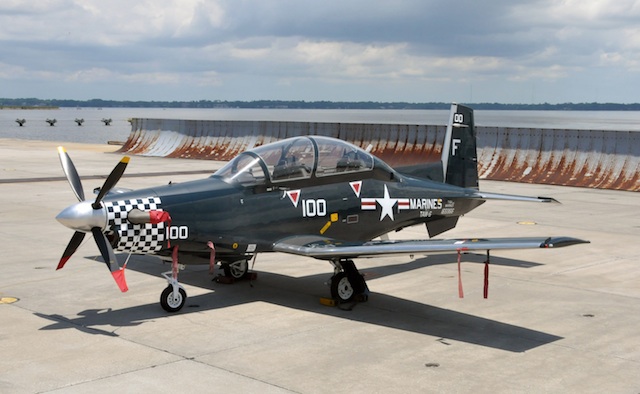The US military is moving forward with plans to modernise the avionics on its fleet of Beechcraft T-6 trainers in an effort intended to ensure the aircraft meet next-generation US airspace requirements through to 2025.
On 24 March, the US Air Force posted a notice on the federal government’s procurement website announcing it will hold an “industry day” event from 22-24 April to explain its requirements to interested bidders.
Documents show the government wants its T-6s to be upgraded with automatic dependent surveillance – broadcast (ADS-B) “out” systems, which are a key component of the US Federal Aviation Administration’s (FAA) next-generation air transportation system plan.
ADS-B “out” systems, which transmit altitude, position and other aircraft data to air traffic controllers, will be required on aircraft in most classes of US airspace by January 2020, according to the FAA.

US Navy
As part of the upgrade effort, the USAF wants its T-6s to also have a host of other new avionics, including replacement altimeters, airspeed and vertical speed indicators, radio management units, electronic instrument displays and engine data managers, solicitation documents show. The work also calls for the modification of 117 simulators.
The US military says it intends to have the upgrades installed on all of the 750 T-6s it eventually expects to operate.
According to Flightglobal’s MiliCAS database, the USAF has 449 T-6As and the US Navy has 207 T-6A/Bs, with the remaining aircraft to be delivered by 2016.
The T-6 upgrade comes as the USAF embarks on its T-X programme – the long-awaited effort to replace its fleet of 430 1960s-era Northrop T-38 Talon trainers.
The service is seeking an aircraft that will better prepare pilots to fly newer fighters like Lockheed Martin’s F-22 and F-35.
Contenders include the Alenia Aermacchi/General Dynamics T-100, BAE Systems/Northrop Grumman Hawk, Korea Aerospace Industries/Lockheed T-50 and a possible new clean-sheet design from Boeing and Saab.
T-X initial operational capability is expected around 2023 under the USAF’s recent budget proposal, which needs Congressional approval.
Source: Flight International



















